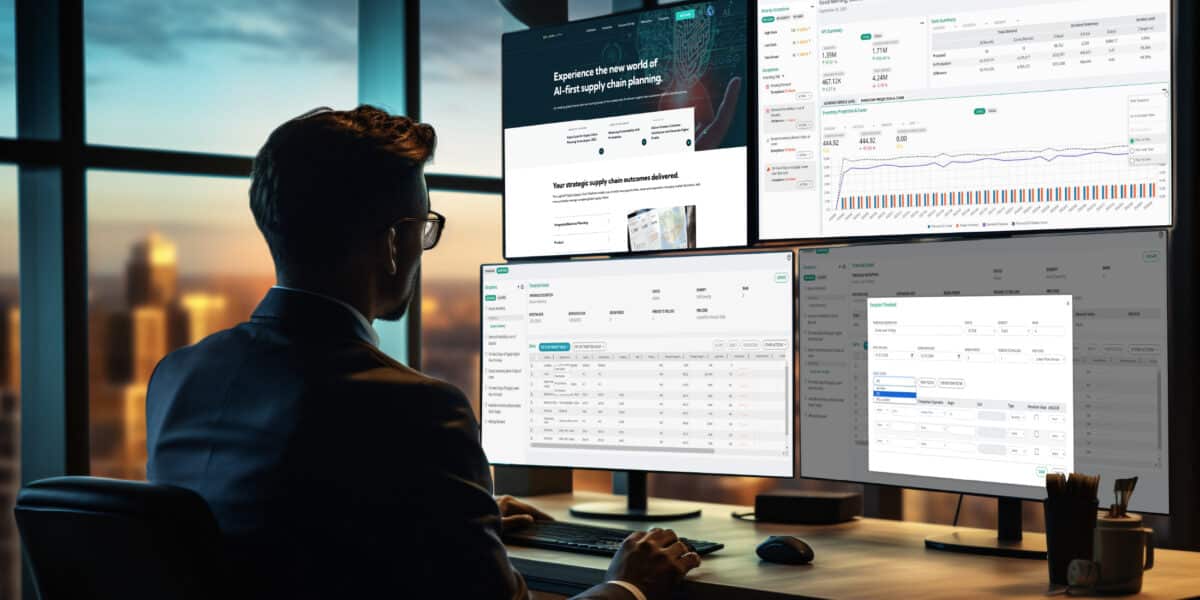
News headlines may have you believe that supply chains across all categories are running amok. Cargo stuck in the Suez Canal, a gas pipeline breach, an overburdened power grid, and shortages in lumber, plastics, and semiconductors – all these events in the last few months should make any supply chain executive nervous. But in reality, such risks in supply variability emerge more often than any business wants to admit. Plant shutdowns and delivery delays may lead to unnecessary product shortages. Rising costs and fluctuating availability of materials and transportation assets can fuel price spikes. Even competition for raw materials and process bottlenecks could reduce service reliability and the trust of highly disappointed customers.
Can businesses gain control over such uncertainty and risks in supply variability before customers begin to lose faith in their vendors’ ability to take another order, fulfill it as promised, and improve their services?
Connecting Demand Predictability, Lead Time, and Customer Satisfaction
The basic economics behind supply chains fundamentally depend on supply and demand. Yet, there is a largely unrecognized element that can be just as impactful: time.
It’s well known that forecast accuracy can weaken and strengthen over time depending on the forecasting cycle, granularity, and planning horizon – and the same can be said for supply variability. So when companies predict demand variability and connect it to forecasted supply variability within a defined horizon, they can develop strategies to maintain service levels across all sales channels and customer segments. In return, orders are booked accurately with minimal backlogs and, as a result, cash conversion rates are accelerated – both hallmarks of profitable growth.
However, a single plant shutdown, a delayed delivery from a tier-n supplier, or unexpected increase in costs of a commodity can spell trouble for the company’s bottom line if supply variability is not adequately managed. Even if repeatable procurement orders are prebooked and substantial working capital is under control, cushioning the impact of such disruptive shocks can be nearly impossible.
The non-linear supply chain network of the day relies on too many providers to deliver the raw materials and services from, for example, co-packers, co-manufacturers, and logistics service providers that are needed to produce and deliver goods. And while the idea of being demand-driven holds true, a pull-based operation can get constrained when supply variability throws a wrench around profitable servicing.
The business must optimize its safety stock, collaborate with suppliers and trading partners consistently, and improve actionable visibility across the multi-enterprise supply chain network – upstream and downstream. Getting a handle on supply variability and keeping demand variances within view can lead to a digital supply chain that is efficient and customer centric. Furthermore, real-time data on product movement, sales transactions, supplier performance, and vendor compliance enables decision-makers to choose alternative sourcing, production, and distribution strategies to meet customer needs, profitably, and on time in full (OTIF).
The result of all this work? Reliable supply chain planning and execution that keeps the customers happy and coming back. This approach helps improve top-line margins and enables boardroom executives to use the digital supply chain as a lever to achieve operational efficiency and enterprise resilience without trading off corporate responsibility.
Elevating the Supply Chain With Visibility and Data
Balancing supply variability with demand shifts requires a modern approach that involves cost-benefit analysis, AI-enabled inventory management, and insight-driven decision-making.
This may include leveraging accurate historical data and predicting impacts on demand satisfaction to establish a hybrid push-pull strategy and weigh alternatives for sourcing and distribution.
Effective visualizations that represent an actionable insight and early warnings on supplier issues can help enterprises proactively address supply variances in their extended network. Additionally, this evaluation can be tied to business requirements such as environmental sustainability compliance and the acceleration of green initiatives to achieve carbon neutrality.
This is when supply chain becomes a CFO’s favorite line of business. The combination of analytical insights and actionable choices bring operational and finance teams together to set aside the optimal working capital to procure the raw materials, ingredients, or finished goods needed to ensure timely delivery and desired service levels. More importantly, the brand can potentially improve its market share by a significant percentage by reducing time to market, leveraging working capital without wasted investment, and satisfying customer needs.
Forging Good Control Builds Profitability and Customer Loyalty
Understanding risks in supply variability is a critical part of running a supply chain operation that optimizes material, production, and distribution assets – all in sync with existing inventory, demand, and the production of replenishing products to fulfill customer expectations. But as many businesses are beginning to realize, it takes real-world, data-driven insights to determine the best strategic outcomes for their bottom line.
Learn how a more data-driven approach to managing demand variability can elevate your supply chain operations.


